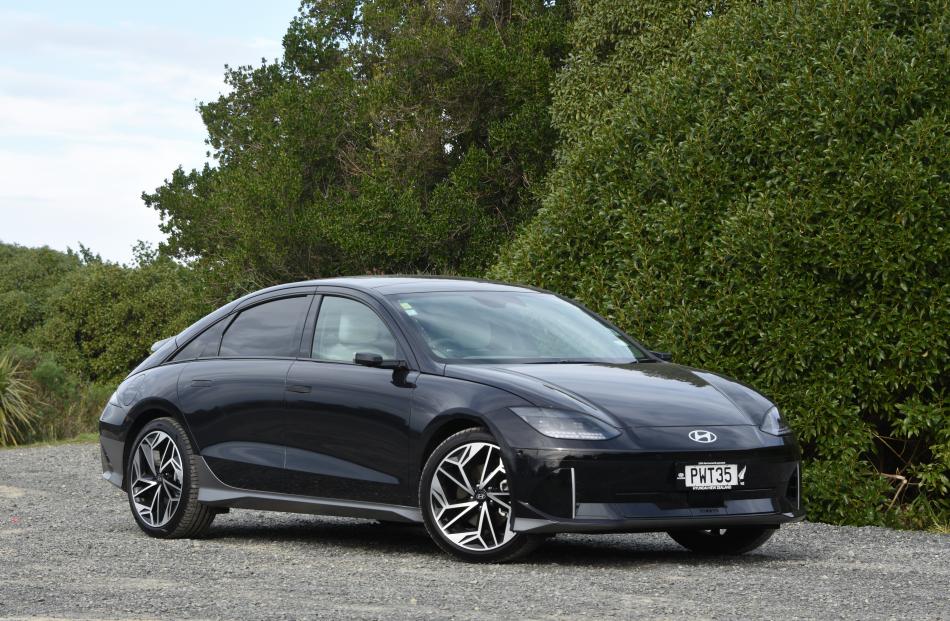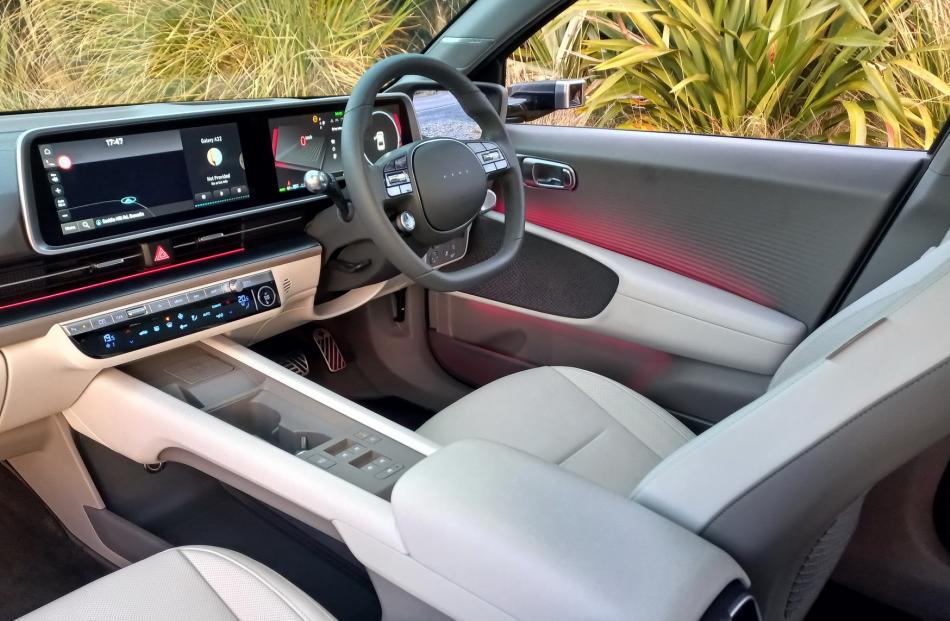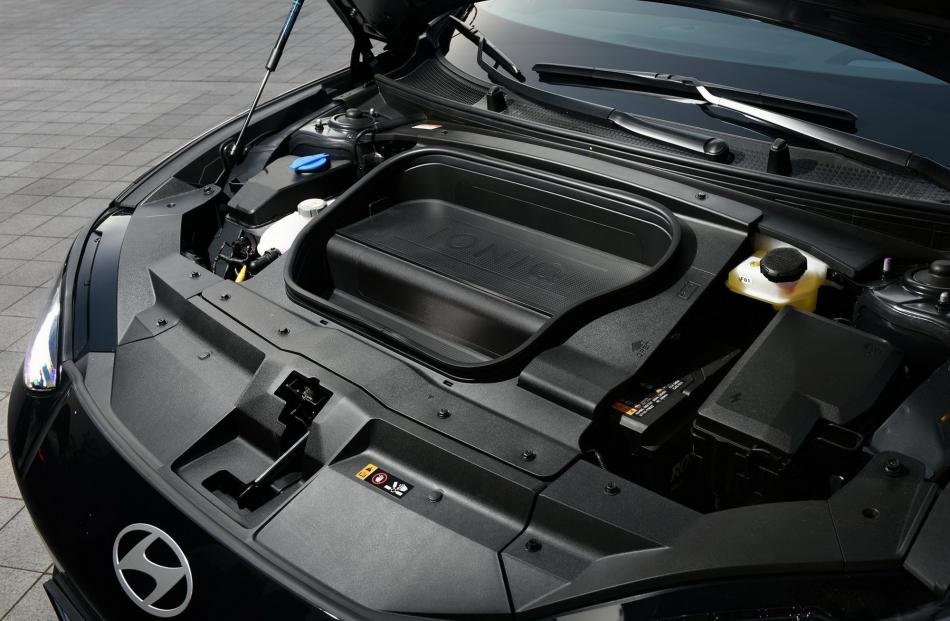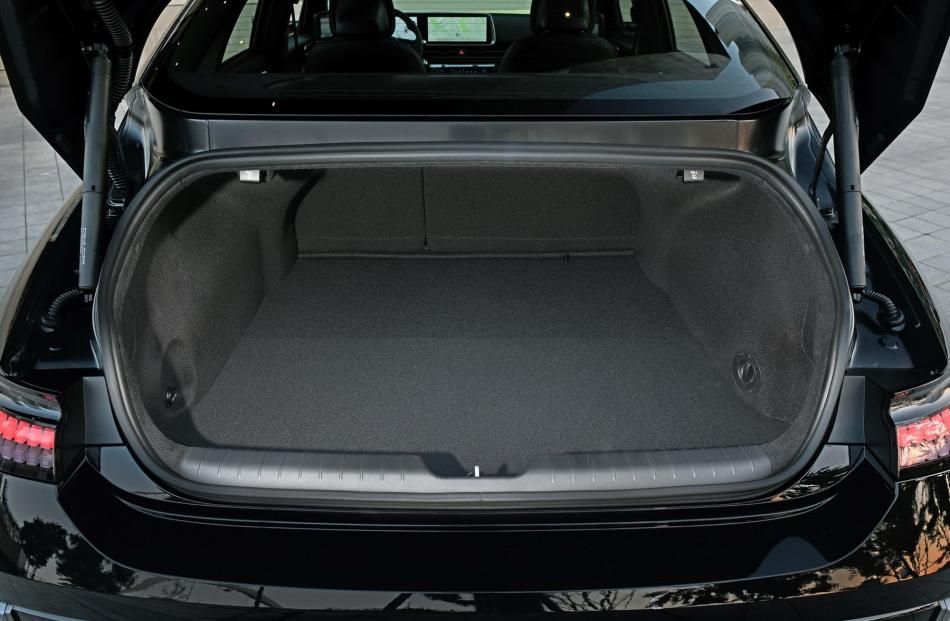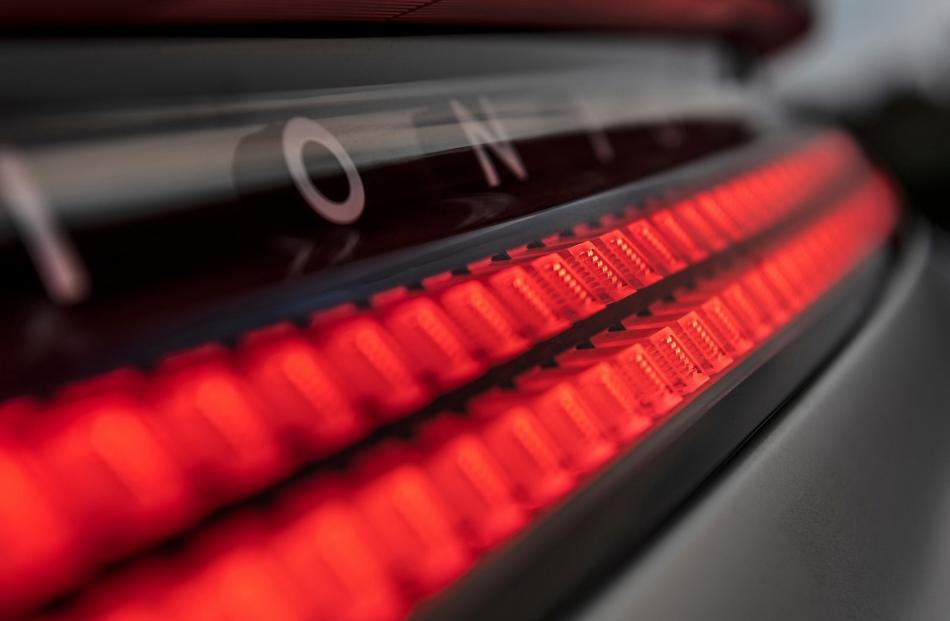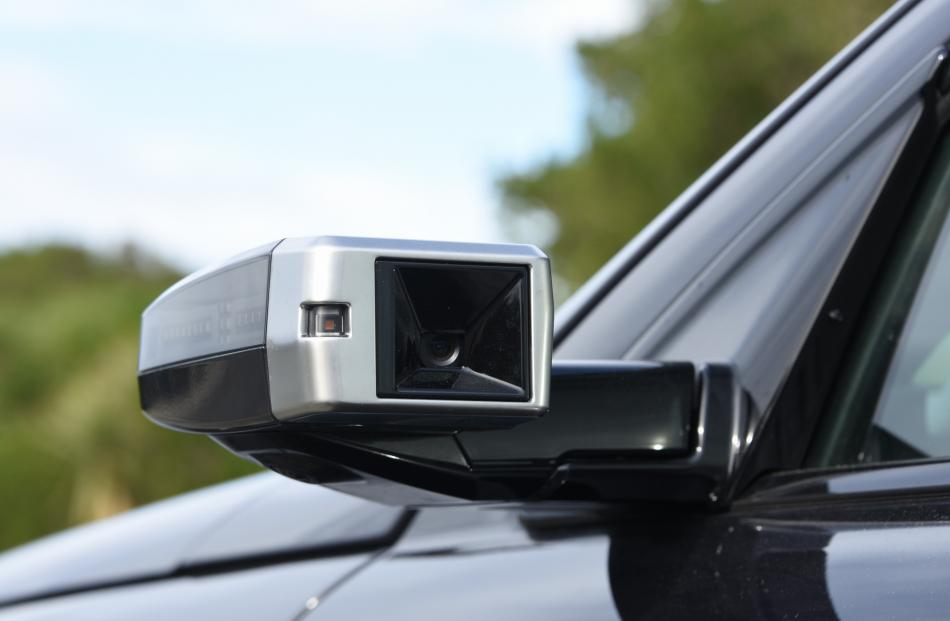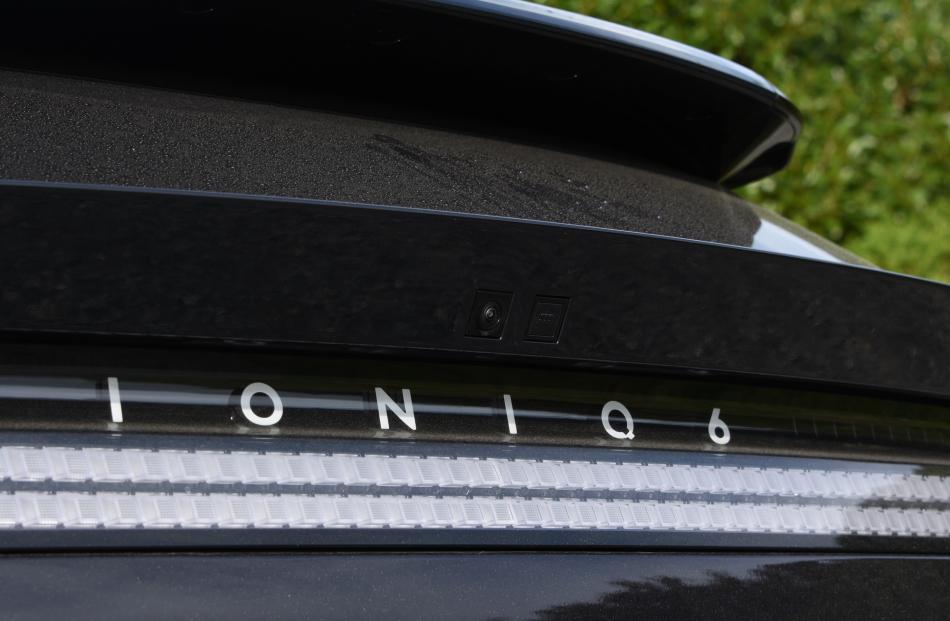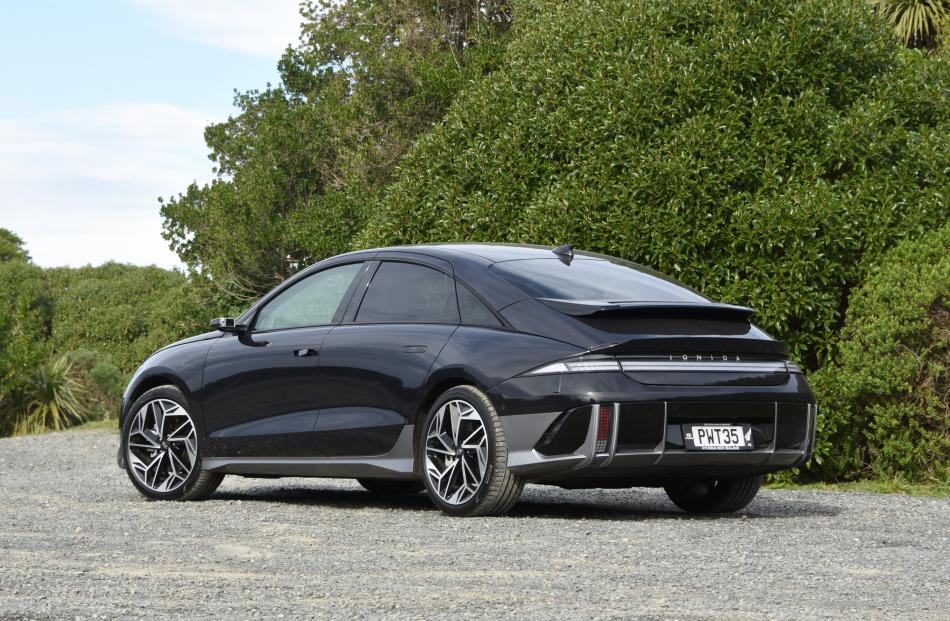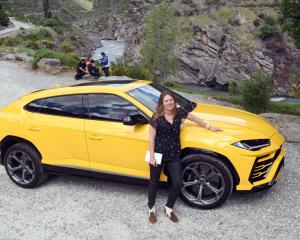By DAVID THOMSON
What’s new?
Hyundai’s first all-electric model, the Ioniq 5, made a great impression when it landed here in 2021, becoming the first vehicle from the Korean marque to scoop New Zealand Car of the Year honours.
It was also feted on the international stage, scooping the coveted World Car of the Year crown.
That’s a hard act to follow, but the recently landed Ioniq 6 has already made its mark overseas, securing Hyundai its second successive World Car of Year trophy just a couple of months ago.
Like the Ioniq 5, the Ioniq 6 sits on the highly regarded Hyundai Electric Global Modular Platform (E-GMP). But whereas the Ioniq 5 is an angular, chunky 5-door crossover, the Ioniq 6 is a low, swoopy four-door sedan.
To get a sense of the dimensional difference, the Ioniq 6 measures 220mm longer, but 105mm shorter.
The two models are not so much pitched as different steps on Hyundai’s EV ladder as alternatives of roughly equal standing.
That’s reflected in their price overlap: both open with $79,990 variants, and it’s only towards the top of the range that the Ioniq 6 commands a decisively higher price.
Drivesouth went straight to the top for this test, taking the $124,990 Ioniq 6 Limited AWD. Like the equivalent Ioniq 5 (at $117,990), this flagship model features a 77.4kWh battery pack and dual electric motors, with a combined 239kW/605Nm output.
The 77.4kWh battery is also available with less power (168kW/350Nm) but more range on the $94,990 2WD and $104,900 2WD Elite variants. Entry level at $79,990 is achieved with more modest power (111kW/350Nm) and a smaller 53kWh battery.
What comes as standard?
A digital main instrument cluster integrated with a same-sized 31cm centre touchscreen is provided even at entry level, along with satellite navigation, wired CarPlay and Android Auto connectivity, wireless phone charging, dual-zone climate control, a power-adjusting drivers’ seat, a power-operated boot, and fully LED lighting.
Vehicle-to-Load power, with a three-pin socket to run small appliances off the Ioniq’s battery also features
Elite level adds leather trim, heated front and rear seats, a heated steering wheel, a power-adjusting front passengers’ seat, premium Bose sound system, rear privacy glass and a heat-pump system for the climate control.
The Limited steps up further with a sunroof, digital side mirrors, a Head Up Display, and seat ventilators.
The safety specification is also tiered. Adaptive cruise control with stop-go functionality, lane assist, blind spot and forward collision assist and avoid are the key active safety features at entry level. The Elite adds in a surround-view camera system, fully adaptive headlights, and more advanced blind spot monitoring, while the Limited takes additional collision avoidance systems and remote parking.
What’s it look like?
For the Ioniq 5, Hyundai’s design team seemed to take inspiration from classic five-door hatchback designs of the 1970s and 1980s, but for the Ioniq 6, they have ventured back even further in time, to some of the bold streamliner vehicles of the 1920s and 1930s.
Not that there’s anything old-fashioned about the Ioniq 6’s appearance: its closely based on Hyundai’s Prophecy concept car from 2020, and adopts a tear-drop form partly in the interests of aerodynamic efficiency. Its drag coefficient of 0.21 is only bettered on a production car by the current Mercedes-Benz EQS, at 0.20.
The Ioniq 6 has a distinctive short front overhang and extended tail, with swoops and curves in the bodywork that cleverly make it look smaller than it actually is.
There’s endless fascination in the detailing too: the light clusters, for example are cleverly executed, especially at the rear, where they integrate with a distinctive double rear spoiler.
As flagship, the Limited AWD test car gained extra exterior bling, including fully digital side mirrors. No doubt painfully expensive to replace if they get damaged, these contain cameras which project a rear-facing imaging on to screens on either side of the dash.
What’s it like inside?
The distinctive exterior is matched by a bold interior, making extensive use of recycled material, and trimmed on the test car mainly in cream, with light chocolate, black and chrome highlighting. Hyundai’s upmarket pitch with its Ioniq sub-brand is apparent in the abundance of soft-touch surfaces, high-quality switchgear, and excellent fit and finish.
The dash is dominated by the paired landscape-format digital display screens, and by the screens for the digital mirrors. There’s a separate control panel for the climate control, topped by a range of useful short cut buttons to call up various screens on the main display.
Providing the wireless charge pad and dual USB-C ports, dual cupholders and a large, lidded centre bin, the centre console is ‘‘free-floating’’ with additional storage underneath. A pull-out glovebox and colour-adjustable LED strip lighting are other noteworthy features up front.
The driving position is relatively low-set, and the front seats comfortable and supportive, but due to its low roofline, the Ioniq 6 is not massively generous for headroom. Squared off at its base, the steering wheel includes the expected multi-function buttons for audio and communications plus adaptive cruise control. There’s also a drive mode selector on the helm (eco, normal and sport being the options), and paddle controls for the three-stage regenerative braking.
The sunroof helps give the back seats light, airy ambience. Rear leg room is hugely generous, and there’s decent shoulder room too, but access is not the easiest, and taller passengers may feel a little squeezed for headroom.
If luggage is a priority, it’s worth noting the Ioniq 6’s boot has a high load lip, and its 401-litre boot capacity compares with 527-litre for the Ioniq 5. This can be boosted by folding the 60:40 split rear seats down, and there is an additional ‘‘frunk’’ storage space under the bonnet, though this reduces from 45-litres on front-drive variants to just 12-litres on the AWD due to the second electric motor.
What’s it like to drive?
With its twin motors producing a combined 239kW and 605Nm, the test car felt amply powered for any occasion. Even in sport mode — where a 0-100kmh time of 5.1sec is possible — the drive system is calibrated to deliver that power progressively rather than with frantic urgency. That’s as it should be given the Ioniq 6 is a luxury four-door saloon.
Being a pure EV there’s no gear-changing to consider, and so it is appropriate that the drive selector is a simple knob mounted on the steering column.
Roughly 70% of peak power and 60% of peak torque are produced by the rear motor, which gives the Ioniq 6 a rear-biased feel even in flagship all-wheel drive guise. This feel is more apparent beyond city limits than around town, where nothing close to maximum power is required.
Master the regenerative braking, and drive with reasonable anticipation, and the conventional friction brakes will rarely be needed, even in urban settings.
Hyundai could have fitted narrow, economy-oriented tyres to boost range, but has instead taken a more conventional approach for the flagship Ioniq 6, fitting 245/40 rubber.
As a result, there’s no shortage of grip. Helped also by the low-down weight of the battery pack, this means it is a car you can push into bends with a fair degree of confidence. It corners with little body role, but hard driving does expose both a sharpness to the damping and a lack of steering feel at the limit.
Back off a notch, or two, and the Ioniq 6 flagship regains its composure; it’s certainly a supremely easy and confident machine when threading through main highways bends at normal speeds.
If the standard offering of eco, normal and sport drive modes are not enough, there’s also a My Mode setting that allows the driver to mix-and-match calibrations for the steering, motor and torque distribution.
Wind roar and tyre rumble are well contained, and there is no mechanical chatter.
Hyundai does however, provide an artificial ‘‘noise enhancer’’ that can be activated to generate a whirring sound through the audio system, varying according to how hard the car is accelerating.
It’s a weird noise, mimicking that of a spaceship from a B-grade sci fi movie.
Having cameras in place of side mirrors is something of a sci-fi trick too. The one on the left worked well, projecting its image on to a screen positioned in exactly the place your eyes focus on when glancing in that direction.
The line of sight for the right-hand screen isn’t as good, as my automatic glance in that direction tended to carry my eye to the camera unit itself rather than the screen.
A more serious recurring pain was a traffic sign recognition system that automatically picks up speed signs, and then sounds a repeated warning bleep if you are even fractionally over the limit. It regularly picked up a 35kmh cornering advisory speed notice just down from my house, decided that was the speed limit for the next stretch of road (which is in fact a 50kmh zone) and proceeded to ‘‘beep’’ me with warnings that I was driving too fast.
Yes, the beeping can be deactivated, but it resets to annoyance mode when the car is switched off.
Ease of EV motoring
The charge port is located at the right rear, the Ioniq 6 plugs into chargers in the usual way, is fully compatible with the incoming generation of 150kW hypercharges, and future-proofed with its ability to charge at up to 233kW.
If range is an absolute priority, then the standard two-wheel drive 77.4kW is the variant to go for.
Lighter, sitting on narrower tyres, and with a less powerful single motor set up, it’s quoted standard cycle range figure is some 20 percent more than the 519km claimed for the flagship AWD Limited.
In terms of real world motoring, that nominal 519km translates to a highway range of between 320km and 415km for the AWD Limited depending on conditions.
So, trips between Dunedin and Queenstown or Dunedin and Wānaka without a charging stop along the way should be practicable. A light-footed driver might even make it as far as Christchurch, though probably risking range anxiety on the final stages of the trip.
Verdict
Hyundai’s Ioniq 5 was startling two years ago for its leading-edge innovation.
The Ioniq 6 carries on the same vein, but under the radical bodywork is more an exercise in evolution than revolution.
As a result, while it’s a clever and appealing car, it doesn’t have quite the same impact.
At A Glance
HYUNDAI IONIQ 6 LIMITED
Overall Rating: 4 star-plus
Design & Styling: 4 star-plus
Interior: 4 star
Performance: 4 star
Ride & Handling: 4 star
Safety: 4 star
Environmental: 4 star
SPECIFICATIONS
Price: $124,990
Clean car rebate: nil (over price threshold)
Powertrain: Dual permanent magnet synchronous electric motors, maximum power 239kW, maximum torque 605Nm.
Transmission: single speed, all wheel drive.
Safety rating: Five-star ANCAP.
Wheels and tyres: Alloy wheels 245/40 R20 tyres.
Battery and economy: 77.4kWh nickel-cobalt-manganese lithium battery, estimated combined economy (WLTP test) 16.9kWh/100km.
Emissions: nil
Dimensions: Length 4855mm, width 1880mm, height 1495mm.
The Hyundai IONIQ 6 is available for test drive at Cooke Howlison Hyundai, 484 Andersons Bay Road Dunedin, www.cookehowlisonhyundai.co.nz, Phone 03 466 3250

